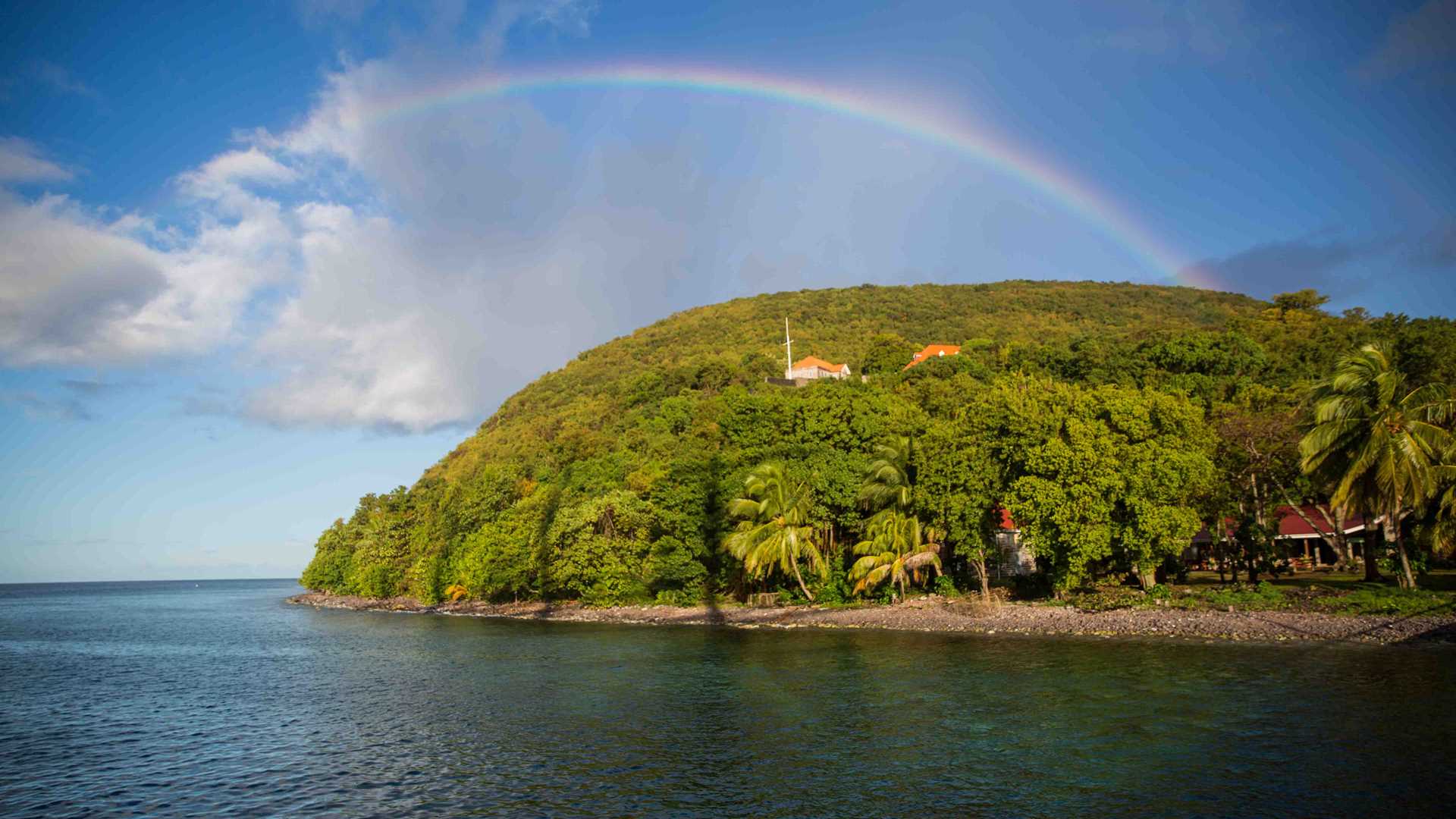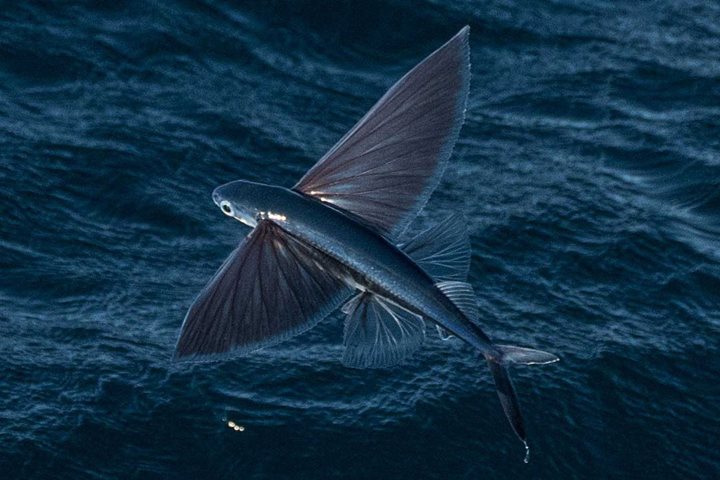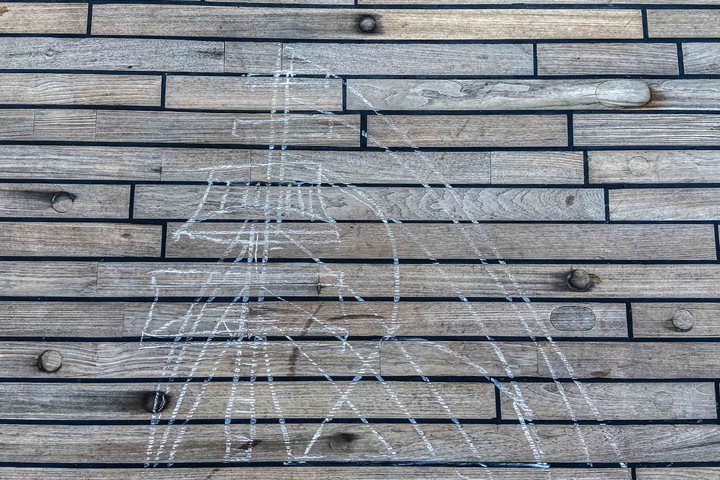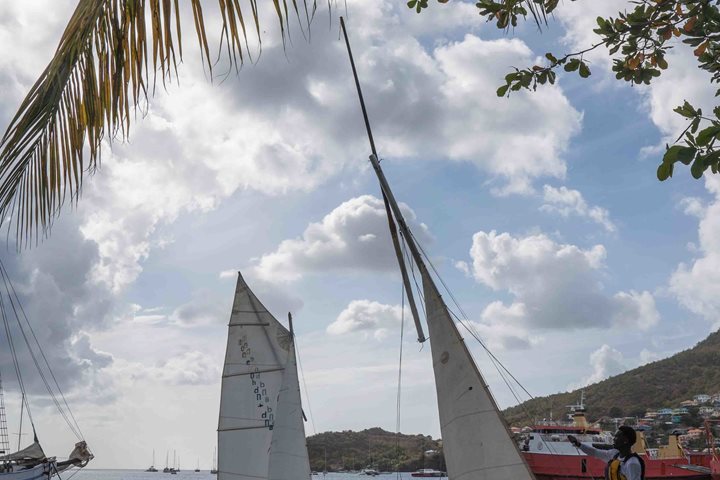Having docked in Prince Rupert Bay last night we had but a few hundred meters to reach our dock and were there by 6:45 a.m. Dominica remains little visited and the Dominicans are a relaxed people. Dominica is the youngest geologically of the Antilles with active volcanoes. The sea off the southwest at Scott’s Head is more than 6000 feet deep. The islands Atlantic coast is rugged and windswept and rising in the middle of the country is the great backbone of mountains which rise to 4775 feet atop Morne Diabolotin.
The deep hued lush green of Dominica, unlike so many of the other Antilles, is caused by the collision of the moisture laden clouds carried by the western winds against the mountains. This morning’s journey is to the tropical rainforest on Morn Diabolotin (known as Waitukubuli in the Kalinago language). We drove for 40 minutes through this lush green paradise, passing plantings of mangoes, papayas, coconuts, bananas, taro (dasheen in the local dialect), sweet potatoes, yams, coffee, and cacao. Poinsettias grew along the road as trees 20 feet tall; crotons of all colors and sizes, anthurium and bird of paradise grew everywhere. During our walk, of 1½ miles through the rainforest, we found trees with buttressing of over 100 feet in diameter. The names of the trees in the local patois are an education in themselves. One has the most remarkably vivid and pungent name -- the infamous “Bwa KaKa” whose wood is used for shingle roofing. The Kriol spelling of the French “bois” for wood is “bwa” and “kaka” – which needs no definition -- identifies the rather noxious smell of the tree on first cutting. Epiphytes grew in profusion, as did tree ferns. My group saw one of the rare parrots in the citrus grove as we emerged from the rainforest.
After a scrumptious lunch which included a freshly caught and largest fresh Mahi Mahi (70 pounds) I have ever seen, I gave an introduction to the 18th century English Fort Shirley and led everyone on an hour walk to the fort and an exploration of the grounds. The fort was begun in 1774 and completed by 1778 and built entirely by local slaves from hand hewn volcanic stone. The fort is massive and spreads across most of the 200 acres of the Cabrits’ headland. Only a small part of the original has been reclaimed from the jungle. The fort never saw action and existed principally as a deterrent. It was designed by the 18th century American architect Peter Harrison to protect the Royal Navy at anchor in Prince Rupert Bay. The fort’s canons could sweep the entire area in front of the town of Portsmouth. There was another battery across the Bay and the two batteries made the bay inviolate.
The fort had 700 enlisted men and a contingent of the 8th West Indian Regiment, made up entirely of slaves. The island changed hands between the French and the English a number of times. The British were ceded the island at the Treaty of Paris in 1863. However, the French forces under Admiral DeBouille took Dominica in September of 1778 – during the American War of Independence -- only to lose it again in the next Treaty of Paris. The Fort was abandoned in 1852/3 and lay derelict and in ruin covered by strangler figs and the jungle until a good friend of mine, Dr. Lennox Honeychurch, a native of Dominica, undertook restoration beginning in 1982. Lennox is still working on the restoration and has accomplished miracles, as we all can now attest. For example, the enlisted men’s barracks which we visited was completely ruined and no walls were standing. The restoration received money from the EU, the Canadian Government and the British Army helped. A goodly number of our group took the longer walk around the perimeter of Cabrits, passing the ruined Command’s quarters. These buildings have not yet been restored and unless funding is forthcoming, they are not likely to be.
On our return a number of us decided to snorkel. The waters off Cabrits are a marine sanctuary and protected. Corals and fish abound in profusion. We set the fo’c’sle jib and departed this lovely island at 5:00 p.m. A scrumptious dinner was served on the Lido Deck with a balmy wind keeping us cool.







